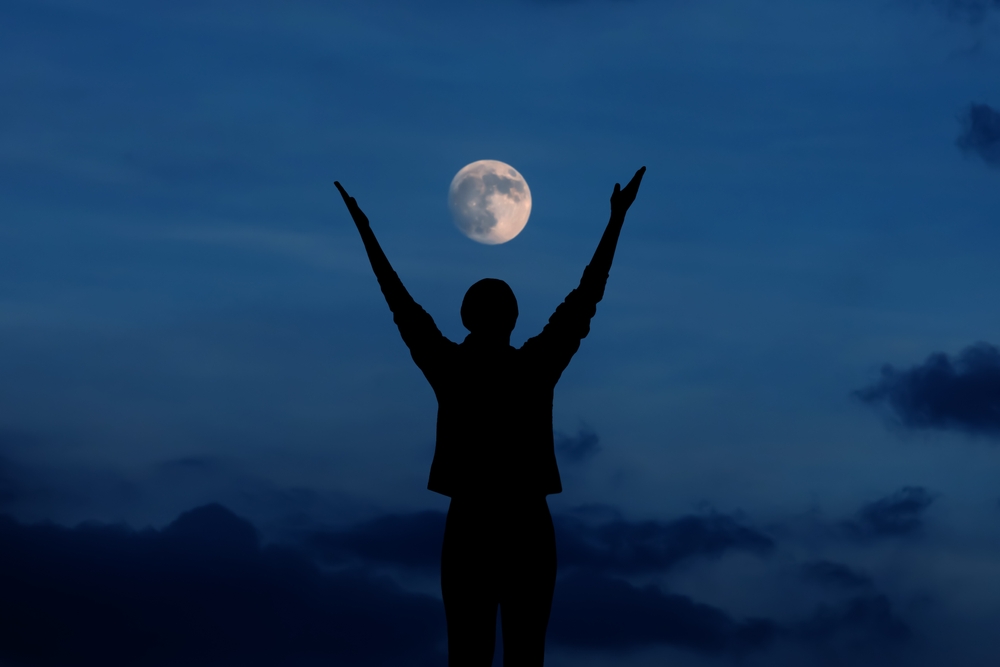Myths of the Moon Shaped Ancient Cultures and Modern Cultures of Today
Posted on Categories Discover Magazine

The moon is something all people on Earth, no matter where or when they’ve lived, have in common. Even modern city dwellers who rarely get a glimpse of the stars (outside a major power outage) can be struck silent with awe at the sudden appearance of the full moon over a nearby building or the reflection of the moon in a puddle of water.
That we all share the moon does not mean that we imagine it the same way, however. In our myths and stories, the moon plays many different roles. The mythologies of the moon are as varied as the cultures that create them.
The Moon in Ancient Mythology
The moon is both mysterious and not. Long before humans walked on the moon, they understood quite a lot about it. The relationship between the moon and the tides, for example, was clear to early peoples who lived near the sea, explains Tok Thompson, an anthropologist at the University of Southern California who specializes in folklore and mythology. Neither did the connection between fertility and the moon’s cycles go unnoticed.
The moon, with its regular phases, also functioned as a calendar. You could track the days by the sun, but for longer periods, the moon was useful. The English word moon comes from mensis, the Latin word for month, which is also the origin of the word ‘menstruation.’
So yes, ancient cultures knew a lot about the moon, and they wanted to share that knowledge to keep a record of it. They did that with stories, says Thompson. “The story can be different, but the knowledge is the same.”
Read More: Ancient Humans and Their Early Depictions of the Cosmos
Moon Myths from Around the World
Thompson’s favorite myth involving the moon is a creation story from the Tlingit people of the northwest coast of North America. In this story, an old man keeps all the light in the world stashed away in a box. Through wiles that vary from telling to telling, the trickster Raven steals the box and releases the Sun, the moon, and all the stars, bringing light to the world.
In Chinese mythology, a woman named Chang E drank a magic elixir, whereupon she floated all the way to the moon, and there she lives still — with, in some versions, a rabbit.
Greek mythology features several goddesses associated with the moon, including Artemis and Hecate. But Selene is the one who represents an embodiment of the moon itself. She makes her nightly travels across the sky in a chariot drawn by two glowing white horses or, in some versions, two white oxen.
Ixchel is a Mayan moon goddess (there are several). She carries a jug of water, occasionally dumping it on Earth, creating rainstorms and floods. As the moon passes through its phases, Ixchel passes through the phases of a woman’s life, from maiden to mother to crone.
Read More: These 5 Ancient Cultures Thought Solar Eclipses Were Omens and Prophecies
Modern Full Moon Superstitions
But moon myths didn’t die out in modern times. We still have some fascinating myths about our favorite satellite. Probably the most persistent is that the moon can drive us mad. Many people — including some healthcare workers and police officers — believe that crime, traffic accidents, psychiatric hospital admissions, and even suicides spike during a full moon.
These days, we don’t blame the effect on moon goddesses or magic elixirs but on something at least quasi-scientific: the moon’s gravitational effect on the water in our bodies. On its surface, that makes a lot of sense. After all, the moon creates tides, and roughly half our body weight is water.
The moon’s gravitational pull is the strongest force affecting us other than the gravitational pull of Earth itself, says Cameron Hummels, a computational astrophysicist and research scientist at Caltech. However, he adds that the gravitational pull of the moon is about 300,000 times weaker than that of Earth. “It’s a very, very minute effect,” he says.
And indeed, though a few small studies have found some possible effects of the moon on mental health, research over the past decades has not borne this out. For example, a Swiss study published in 2019 looked at almost 18,000 cases of in-patient psychiatric admissions over ten years and found no correlation between the phase of the moon and psychiatric admissions or length of stay.
But perhaps there’s a reason we so easily believe that the moon has a powerful effect on our mental health. Pausing to gaze at the moon can create an intense feeling of both awe and peace. Rather than making us mad, the moon might just make us a little bit more sane.
Read More: Why Do We Still Believe in ‘Lunacy’ During a Full Moon?
Article Sources
Our writers at Discovermagazine.com use peer-reviewed studies and high-quality sources for our articles, and our editors review for scientific accuracy and editorial standards. Review the sources used below for this article:
Avery Hurt is a freelance science journalist. In addition to writing for Discover, she writes regularly for a variety of outlets, both print and online, including National Geographic, Science News Explores, Medscape, and WebMD. She’s the author of Bullet With Your Name on It: What You Will Probably Die From and What You Can Do About It, Clerisy Press 2007, as well as several books for young readers. Avery got her start in journalism while attending university, writing for the school newspaper and editing the student non-fiction magazine. Though she writes about all areas of science, she is particularly interested in neuroscience, the science of consciousness, and AI–interests she developed while earning a degree in philosophy.